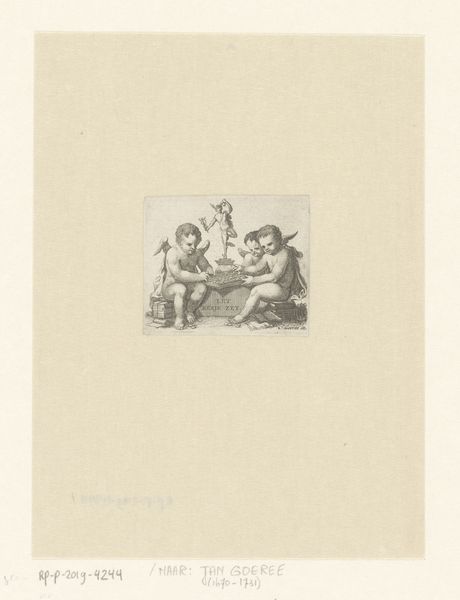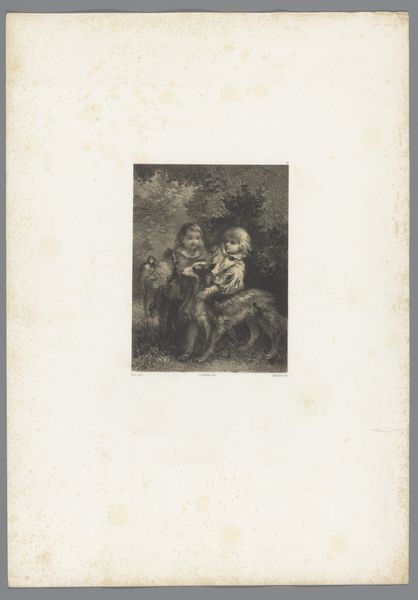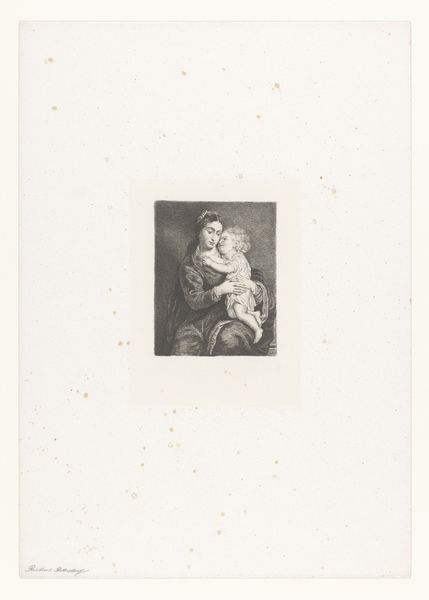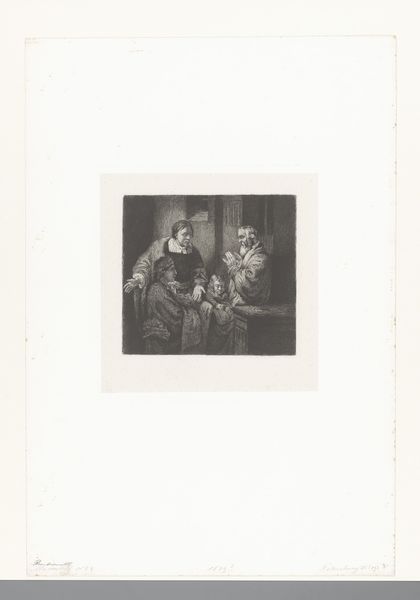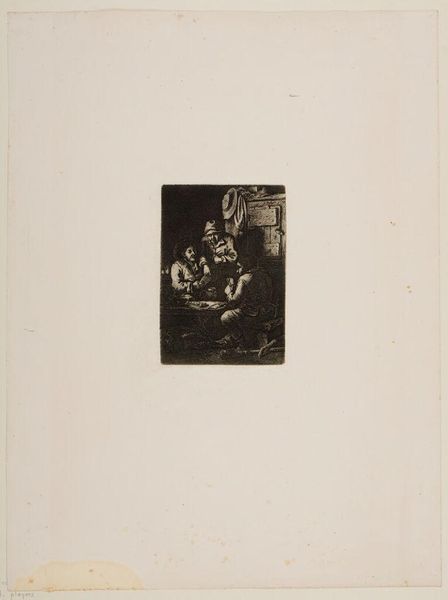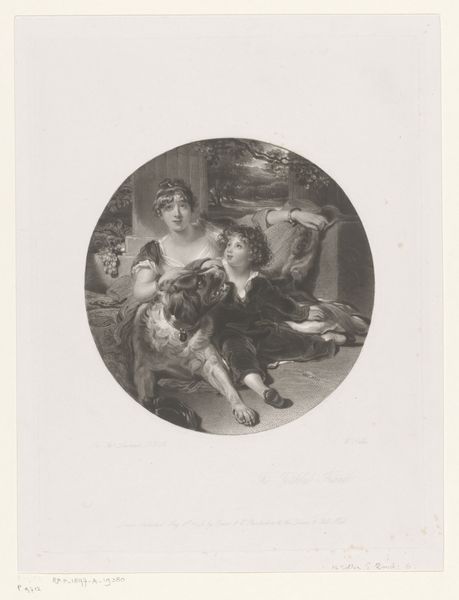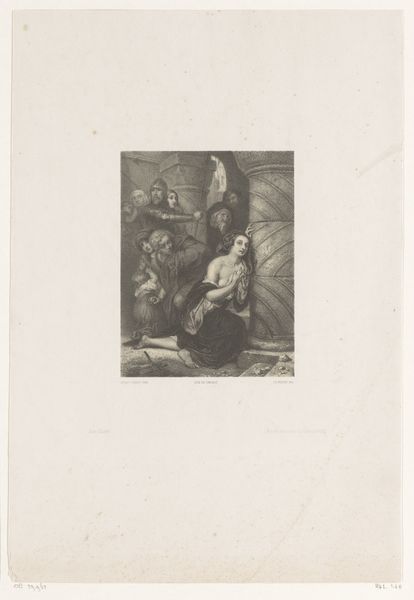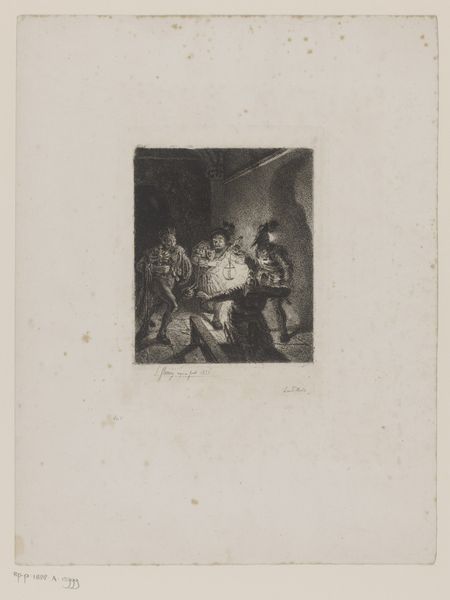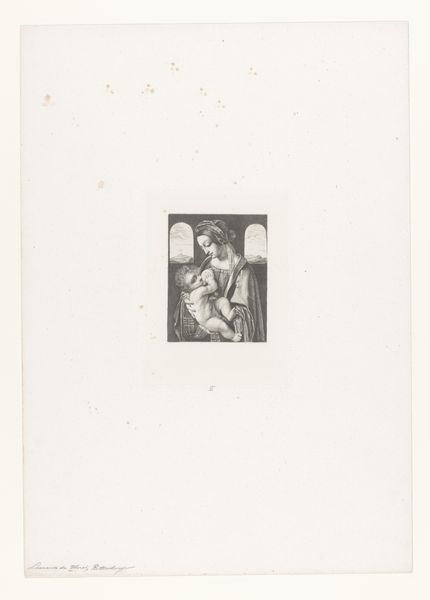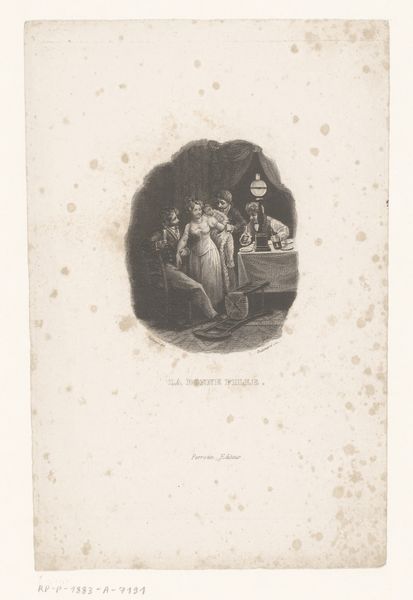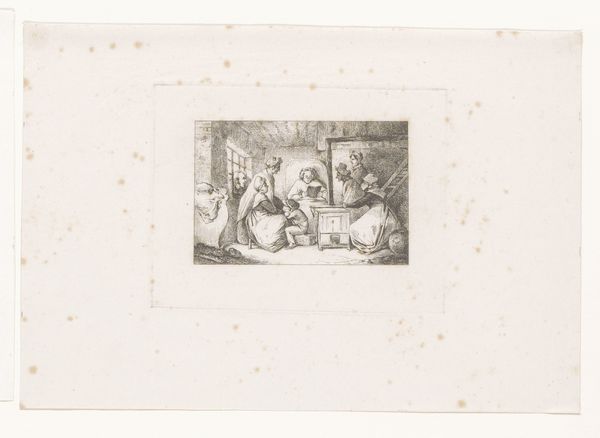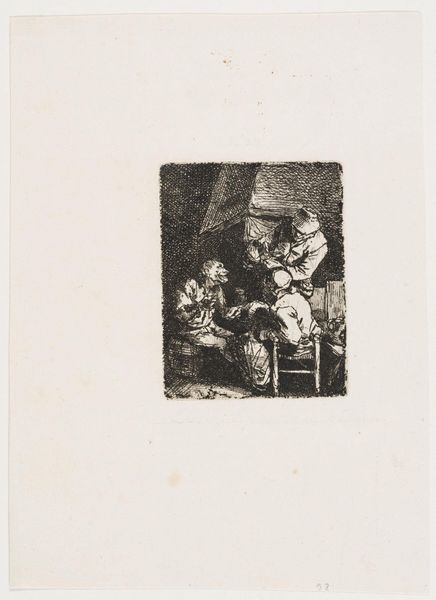
Familieportret van Frederik V, zijn vrouw Elisabeth Stuart en hun zoon prins Frederik Hendrik van de Palts Possibly 1604 - 1899
0:00
0:00
simonvandepasse
Rijksmuseum
engraving
#
portrait
#
old engraving style
#
personal sketchbook
#
sketchbook drawing
#
history-painting
#
northern-renaissance
#
engraving
#
realism
Dimensions: height 62 mm, width 50 mm
Copyright: Rijks Museum: Open Domain
Curator: The delicate lines in this print, dating possibly between 1604 and 1899, form a family portrait. Simon van de Passe captured Frederik V, his wife Elisabeth Stuart, and their son, Prince Frederik Hendrik van de Palts, through the medium of engraving. Editor: It has such a stiff formality to it. The faces are very serious, the lines of the engraving quite precise and unwavering. Curator: Absolutely. Consider the historical context. Royal portraiture served a very specific function. It was about conveying power, legitimacy, and continuity of dynasty. This engraving would have been relatively accessible. The materiality here matters – engravings allowed for the mass production and dissemination of images of the royal family, shaping public perception of the monarchy. Editor: And yet, you’ve got these incredible details – the lace collars, the jewels, the tiny facial features of the child. There’s an inherent tension between the intention for wide dissemination and the labor-intensive process of engraving, isn’t there? It’s craft operating on behalf of the crown. It almost transforms the whole idea of accessibility and makes you think who in fact were these engravings actually accesible to? Curator: Precisely! Think about how such images would have functioned within the networks of power. They would be reproduced, distributed, and consumed as visual representations of sovereignty. And this piece is displayed at the Rijksmuseum, an institution central to national identity-building, adding another layer of political significance. The placement in that institution dictates it a place to become of a grand history. Editor: That makes you wonder about the skill of the engraver in presenting it, not as the sitters may be or have been known as themselves, but the power the artist has as another step of consumption between family, engraving and society. It makes this engraving far more material in form and context. Curator: I hadn’t considered that layer! I suppose the intersection between historical significance and artistic production is key to the cultural weight this work now carries, beyond simply representing a family. Editor: Indeed. This print offers a peek into the intertwined histories of labor, politics, and artistic representation.
Comments
No comments
Be the first to comment and join the conversation on the ultimate creative platform.
